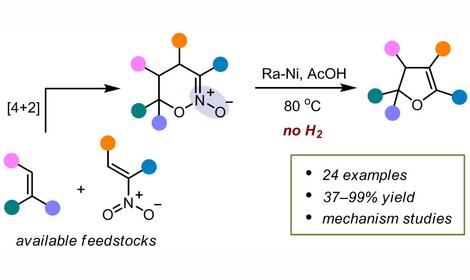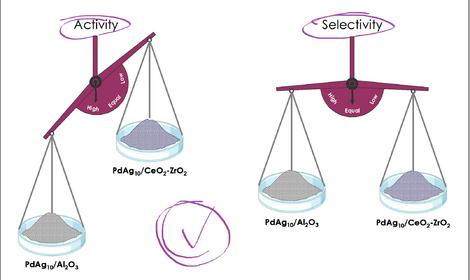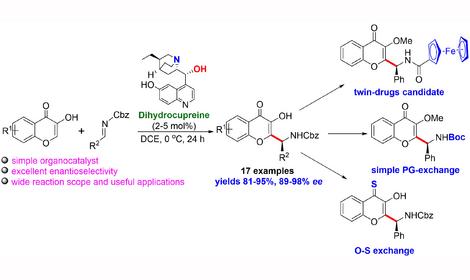Laboratory of Polysulphur-Nitrogen Heterocycles (N31)

The laboratory was founded in 1995 on the basis of a part of Laboratory of Nitrogen-Containing Compounds and since then it has been headed by its current leader.
The head
Oleg A. Rakitin, Prof., DSc (Chem.)
Oleg A. Rakitin is also the head of the joint laboratory of IOC RAS and South Ural State University
e-mail: orakitinioc.ac.ru, tel. +7 (499) 135-5327
Research Areas
- Synthesis and chemical properties of novel chemical polysulfur- and sulphur-nitrogen heterocyclic compounds, both aromatic and antiaromatic, as well as systems with extended conjugation.
- Search of components for organic semiconductors, nonlinear optical materials, viz. electron-rich liquid crystalline substances, organic conductors, and magnetic materials.
- Development of routes for the preparation of polysulfur heterocycles, viz. 1,2,3,4,5-pentathiepines, 1,2-dithioles and 1,2,3-dithiazoles as potential biologically active compounds, particularly antitumour agents.
- Design of heterocyclic thiazyl radicals and anion-radicals and their selenium and tellurium analogs as novel functional materials – magnetic, magnetically bistable, conducting, and superconducting.
- Synthesis of new sulfur-containing heterocyclic systems with potential anticancer and anti-AIDS activities.
Main Results
1. Novel pathways to the polysulfur-nitrogen heterocycles
A discovery of novel pathways to the synthesis of polysulfur-nitrogen heterocycles containing several sulfur atoms and a nitrogen atom on the basis of a reaction of a complex of sulfur monochloride with a nitrogen-containing base; synthesis of several novel heterocyclic systems, including 1,2- and 1,4-thiazines, thiophenes, monocyclic and fused 1,2-dithioles and 1,2,3-dithiazoles, 1,2,3,4,5-pentathiepins, 1,2,3,4,5,6,7-heptathiocans, etc. with anticancer, antimicrobial and antifungal activity.
Synthesized 1,2,3,4,5-pentathiepines have been studied as cathodic materials for storage batteries; fused 1,4-dithiines have been proposed as multi-purpose components for photoreceptors.
2. Candle Light-Style Organic Light Emitting Diode
Physiologically safe OLED based on a hybrid of organic and organometallic emitting materials was created by the joint team of Laboratory N31 (IOC RAS), South Ural State University, P.N. Lebedev Physical Institute of the Russian Academy of Sciences, and D.I. Mendeleev University of Chemical Technology of Russia. Due to an innovative design and a combination of new specially synthesized luminophores, the new light source practically has no harmful radiation in the blue region of the spectrum, and the color characteristics of its radiation are similar to the light characteristics of the flame of ordinary candles. At the same time, such a diode is much more energy-efficient than incandescent lamps, and its brightness characteristics comply with the requirements of modern light sources. On average, an OLED panel made from new materials with 10x10 cm size (the half of the screen of a small smartphone) under optimal conditions provides the same level of illumination as 10-12 ordinary candles, while its brightness will be 4-5 times greater than a standard computer monitor. A very important feature of the developed device is the lack of rare and precious metals, such as iridium and platinum (the basis of modern industrial luminophores for OLED devices), and the relative simplicity of the design.
The article was published in one of the most prestigious journals of the first quartile “Chemical Communications”, and was placed as the cover picture of the current issue. Chem. Commun., 2019, 55, 13354-13357. DOI: 10.1039/C9CC04973H. IF 6.164 (Q1).
3. General mechanism of action of polysulfur heterocycles against feline immunodeficiency virus
It was founded that the polysulfur heterocycles synthesized at the Laboratory N31 (IOC RAS) have a common mechanism of action and high selectivity against the cat immunodeficiency virus, which is the closest analogue of the HIV. It was shown that compounds of different heterocyclic structures (such as bis(dithiolo)thiazines, bis(dithiolo)pyrroles, tetrathiocines, dithiazoles, dithioloindoles, pentathiepins and thiaselenazoles) are promising anti-AIDS compounds, which is of great value for the development of not only chemical, but also biological sciences.
These heterocycles with a highly reactive sulfur-sulfur bond can be opened in the body with the formation of dithiols, which interact with the zinc atom removing it from the virus molecule in the form of protein-zinc-thiol complexes and thereby deactivating it. In the course of the work, compounds having together high nanomolar antiviral activity, and also low toxicity to ordinary cells were found, which leads to high values of the therapeutic index. A distinctive feature of this study is a collaboration of a number of groups in the world working in various fields of science. Thus, the synthesis and identification of the structure of new compounds took place at the Laboratory N31 (IOC RAS), studies of activity against the immunodeficiency virus of cats took place at the University of Zurich (Switzerland), studies of the mechanism of action of heterocyclic structures took place at University College London (UK) and the University of North Carolina (USA), computer simulation of the biological effects of our compounds took place at the University of Eastern Finland (Finland).
Articles published in two prestigious journals: ChemMedChem, 2019, 14, No. 4, 454-461, DOI: 10.1002/cmdc.201800718. IF 3.016 (Q2); Bioorg. Med. Chem. Lett., 2019, 29, 1765-1768. DOI: 10.1016/j.bmcl.2019.05.016. IF 2.442 (Q2).
4. New series of organic sensitizers based on [1,2,5]thia(selena)diazolo[3,4-c]pyridines
Solar cells based on individual organic molecules have a number of undeniable advantages over widely used silicon counterparts: low cost, the simplicity of the design, the possibility of a wide modification of properties and improved performance. Dye-sensitized solar cells are the most promising class of organic-based solar cells. One of the most effective strategies for the design of organic dyes is the strategy of introducing an additional acceptor group (А) between the donor and the π-bridge (D-A-π-А). Two new series of organic sensitizers based on new internal acceptors ([1,2,5]thiadiazolo[3,4-c]pyridine and [1,2,5]selenadiazolo[3,4-c]pyridine) were synthesized at the Laboratory N31 (IOC RAS) and their photovoltaic efficiency was studied at the University of Edinburgh (UK).
The test results showed that the obtained dyes have an average photovoltaic efficiency. However, the use of the well-known SQ2 dye, which absorbs in the near infrared region of the spectrum, as a co-sensitizer allowed us to increase the photovoltaic efficiency of OKT-1 dye by 35% to 4.19% and showed the effectiveness of this method for improving the photovoltaic properties of sensitizers.
Sol. Energy, 2017, 144, 134-143. DOI: 10.1016/j.solener.2017.01.016. IF 4.018 (Q1).
The most important publications (2014-2019).
1. V. M. Korshunov, T. N. Chmovzh, E. A. Knyazeva, I. V. Taydakov, L. V. Mikhalchenko, E. A. Varaksina, R. S. Saifutyarov, I. C. Avetissov, O. A. Rakitin “A Novel Candle Light-Style OLED with a record low colour temperature” Chem. Commun, 2019, 55, No. 89, 13354-13357. DOI: 10.1039/C9CC04973H. IF 6.164 (Q1).
2. A. Leventis, T. N. Chmovzh, E. A. Knyazeva, Y. Han, M. J. Heeney, O. A. Rakitin, H. Bronstein “A novel low-bandgap pyridazine thiadiazole-based conjugated polymer with deep molecular orbital levels” Polym. Chem., 2019, accepted. DOI: 10.1039/c9py01137d. IF 4.76 (Q1).
3. C. R. M. Asquith, T. Meili, T. Laitinen, I. V. Baranovsky, L. S. Konstantinova, A. Poso, O. A. Rakitin, R. Hofmann-Lehmann “Synthesis and comparison of substituted 1,2,3-dithiazole and 1,2,3-thiaselenazole as inhibitors of the feline immunodeficiency virus (FIV) nucleocapsid protein as a model for HIV infection” Bioorg. Med. Chem. Lett., 2019, 29, No. 14, 1765-1768. DOI: 10.1016/j.bmcl.2019.05.016. IF 2.442 (Q2).
4. T. N. Chmovzh, E. A. Knyazeva, E. Tanaka, V. V. Popov, L. V. Mikhalchenko, N. Robertson, O. A. Rakitin “[1,2,5]Thiadiazolo[3,4-d]pyridazine as an internal acceptor in the D-A-π-A organic sensitizers for dye-sensitized solar cells” Molecules, 2019, 24, No. 8, 1588. DOI: 10.3390/molecules24081588. IF 3.098 (Q2).
5. V. A. Ogurtsov, Y. V. Karpychev, Y. V. Nelyubina, P. V. Primakov, P. A. Koutentis, O. A. Rakitin “Synthesis of 6,7-dihydropyrrolo[2,1-c][1,3]thiazino[3,2-a]pyrazine-4(11bH)-(thi)ones from 1,2-dithiolo-3-(thi)ones” Eur. J. Org. Chem., 2019, No. 26, 4149-4158. DOI: 10.1002/ejoc.201900142. IF 3.029 (Q2).
6. C. R. M. Asquith, T. Laitinen, L. S. Konstantinova, G. Tizzard, A. Poso, O. A. Rakitin, R. Hofmann-Lehmann, S. T. Hilton “Investigation of the pentathiepin functionality as an inhibitor of Feline Immunodeficiency Virus (FIV) via a potential zinc ejection mechanism, as a model for HIV infection” ChemMedChem, 2019, 14, No. 4, 454-461. DOI: 10.1002/cmdc.201800718. IF 3.009 (Q2).
7. O. A. Rakitin, A. V. Zibarev “Recent Progress in Synthesis and Applications of 5-Membered Chalcogen-Nitrogen π-Heterocycles with Three Heteroatoms” Asian J. Org. Chem., 2018, 7, No. 12, 2397-2416. DOI: 10.1002/ajoc.201800536. IF 2.496 (Q2).
8. T. N. Chmovzh, E. A. Knyazeva, L. V. Mikhalchenko, I. S. Golovanov, S. A. Amelichev, O. A. Rakitin “Synthesis of 4,7-dibromo derivative of ultrahigh electron-deficient [1,2,5]thiadiazolo[3,4-d]pyridazine heterocycle and its cross-coupling reactions” Eur. J. Org. Chem., 2018, 41, No. 41, 5668-5677. DOI: 10.1002/ejoc.201800961. IF 2.882 (Q2).
9. T. N. Chmovzh, E. A. Knyazeva, K. A. Lyssenko, V. V. Popov, O. A. Rakitin “Safe synthesis of 4,7-dibromo[1,2,5]thiadiazolo[3,4-d]pyridazine and its SNAr reactions” Molecules, 2018, 23, No. 10, 2576. DOI: 10.3390/molecules23102576. IF 3.098 (Q2).
10. V. A. Ogurtsov, P. V. Dorovatovskii, Y. V. Zubavichus, V. N. Khrustalev, A. N. Fakhrutdinov, S. G. Zlotin, O. A. Rakitin “[1,2,5]Oxadiazolo[3,4-d]pyridazine 1,5,6-trioxides: efficient synthesis via the reaction of 3,4-bis(hydroxyimino)methyl)-1,2,5-oxadiazole 2-oxides with a mixture of concentrated nitric and trifluoroacetic acids and structural characterization” Tetrahedron Lett., 2018, 59, No. 32, 3143-3146. doi: https://doi.org/10.1016/j.tetlet.2018.07.015. IF 2.125 (Q2).
11. Y. Shuku, Y. Hirai, N. A. Semenov, E. Kadilenko, N. P. Gritsan, A. V. Zibarev, O. A. Rakitin, K. Awaga “3D molecular network and magnetic ordering, formed by multi-dentate magnetic couplers, bis(benzene)chromium(I) and [1,2,5]thiadiazolo[3,4-c][1,2,5]thiadiazolidyl” Dalton Trans., 2018, 47, 9897-9902; DOI: 10.1039/c8dt02214c. IF 4.099 (Q1).
12. L. S. Konstantinova, I. V. Baranovsky, V. V. Strunyasheva, A. S. Kalogirou, V. V. Popov, K. A. Lyssenko, P. A. Koutentis, O. A. Rakitin “The Conversion of 5,5′-Bi(1,2,3-dithiazolylidenes) into Isothiazolo[5,4-d]isothiazoles”, Molecules, 2018, 23, No. 6, 1257. DOI: 10.3390/molecules23061257. IF 3.098 (Q2).
13. L. S. Konstantinova, I. V. Baranovsky, E. A. Pritchina, M. S. Mikhailov, I. Yu. Bagryanskaya, N. A. Semenov, I. G. Irtegova, G. E. Salnikov, K. A. Lyssenko, N. P. Gritsan, A. V. Zibarev, O. A. Rakitin, “Fused 1,2,3-Thiaselenazoles Synthesized from 1,2,3-Dithiazoles via Selective Chalcogen Exchange” Chem. Eur. J., 2017, 23, No. 67, 17037-17047. DOI: 10.1002/chem.201703182. IF 5.771 (Q1).
14. E. A. Chulanova, E. A. Pritchina,L. A. Malaspina, S. Grabowsky, F. Mostaghimi, J. Beckmann, I. Yu. Bagryanskaya, M. V. Shakhova, L. S. Konstantinova, O. A. Rakitin, N. P. Gritsan, A. V. Zibarev “Novel Charge-Transfer Complexes with 1,2,5-Thiadiazoles as Both Electron Acceptors and Donors Featuring an Unprecedented Addition Reaction” Chem. Eur. J., 2017, 23, No. 4, 852-864. DOI: 10.1002/chem.201604121. IF 5.771 (Q1).
15. E. A. Knyazeva, W. Wu, T. N. Chmovzh, N. Robertson, J. D. Woollins, O. A. Rakitin, “Dye-sensitized solar cells: Investigation of D-A-π-A organic sensitizers based on [1,2,5]selenadiazolo[3,4-c]pyridine” Sol. Energy, 2017, 144, 134-143. DOI: 10.1016/j.solener.2017.01.016. IF 4.018 (Q1).
16. E. A. Knyazeva, O. A. Rakitin “Influence of structural factors on the photovoltaic properties
of dye-sensitized solar cells” Russ. Chem. Rev., 2016, 85, 10, 1146-1183. DOI: 10.1070/RCR4649. IF 3.687 (Q1).
17. L. S. Konstantinova, I. V. Baranovsky, I. G. Irtegova, I. Y. Bagryanskaya, L. A. Shundrin, A. V. Zibarev, O. A. Rakitin, “Fused 1,2,3-Dithiazoles: Convenient Synthesis, Structural Characterization, and Electrochemical Properties”,Molecules, 2016, 21, No. 5, 596. DOI:10.3390/molecules21050596. IF 2.465 (Q2).
18. V. A. Ogurtsov, A. V. Shastin, S. G. Zlotin, O. A. Rakitin “Short and efficient synthesis of 1-(2-oxido-1,2,5-oxadiazol-3-yl)alkyl nitrates by unconventional nitrooxylation of 3-alkyl-1,2,5-oxadiazole 2-oxides” Tetrahedron Lett., 2016, 57, No. 36, 4027-4030. DOI: 10.1016/j.tetlet.2016.07.048. IF 2.347 (Q2).
19. C. R. M. Asquith, L. S. Konstantinova, T. Laitinen, M. L. Meli, A. Poso, O. A. Rakitin, R. Hofmann-Lehmann, S. T. Hilton ”Evaluation of substituted 1,2,3-dithiazoles as inhibitors of feline immunodeficiency virus (FIV) via a proposed zinc ejection mechanism” ChemMedChem, 2016, 11, No. 19, 2119-2126. DOI: 10.1002/cmdc.201600260. IF 2.98 (Q2).
20. L. S. Konstantinova, I. E. Bobkova, Y. V. Nelyubina, E. A. Chulanova, I. G. Irtegova, N. V. Vasilieva, P. S. Camacho, S. E. Ashbrook, G. Hua, A. M. Z. Slawin, J. D. Woollins, A. V. Zibarev, O. A. Rakitin, “[1,2,5]Selenadiazolo[3,4-b]pyrazines: Synthesis from 3,4-Diamino-1,2,5-selenadiazole and Generation of Persistent Radical Anions” Eur. J. Org. Chem., 2015, No. 25, 5585-5593. DOI: 10.1002/ejoc.201500742. IF 3.065 (Q2).
21. L. S. Konstantinova, E. A. Knyazeva, O. A. Rakitin “Direct Exchange of Oxygen and Selenium Atoms in the 1,2,5-Oxadiazoles and 1,2,5-Selenadiazoles by Action of Sulfur Monochloride” Molecules, 2015, 20, 14522-14532. DOI: 10.3390/molecules200814522. IF 2.416 (Q2).
22. N. A. Pushkarevsky, N. A. Semenov, A. A. Dmitriev, N. V. Kuratieva, A. S. Bogomyakov, I. G. Irtegova, N. V. Vasilieva, B. E. Bode, N. P. Gritsan, L. S. Konstantinova, J. D. Woollins, O. A. Rakitin, S. N. Konchenko, V. I. Ovcharenko, A. V. Zibarev “Synthesis and Properties of the Heterospin (S1 = S2 = 1/2) Radical-Ion Salt Bis(mesitylene)molybdenum(I) [1,2,5]Thiadiazolo[3,4-c][1,2,5]thiadiazolidyl” Inorg. Chem., 2015, 54, No. 14, 7007-7013. DOI:10.1021/acs.inorgchem.5b01033. IF 4.762 (Q1).






